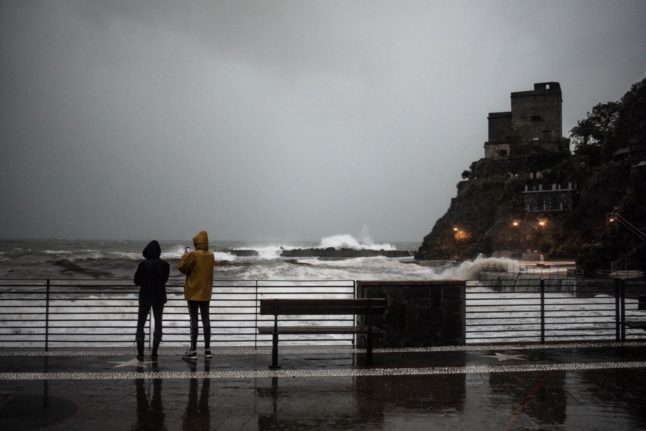Italy’s civil protection authority issued its highest-level red alert for parts of the Friuli Venezia Giulia and Veneto regions on Thursday, November 2nd, warning of heavy rainfall and strong winds in the area.
LATEST: Severe travel disruption, power cuts and 190km/h winds as Storm Ciaran hits France
Storm Ciaran was forecast to arrive in northern Italy after pelting Britain, Spain, Belgium, the Netherlands and France, where it killed at least one person.
A moderate-level amber alert was issued for parts of Emilia Romagna, Friuli Venezia Giulia, Liguria, Lombardy, Tuscany, Trentino Alto Adige and Veneto on Thursday.
An update on Thursday evening showed an amber alert was also in place for the city of Naples on Friday as the storm was forecast to move further south into the regions of Lazio, Umbria, Campania and parts of Calabria.
⛈️💨 Piogge e venti forti al Centro-Sud
📆 Venerdì #3novembre
🔔🔴 #allertaROSSA su settori di Veneto e Friuli Venezia Giulia
🔔🟠 #allertaARANCIONE in 9 regioni
🔔🟡 #allertaGIALLA in 13 regioni
Leggi l’avviso del #2novembre 👉 https://t.co/pNAq6qx4c3#protezionecivile pic.twitter.com/tBbt6SDcV7— Dipartimento Protezione Civile (@DPCgov) November 2, 2023
The storm front was expected to bring winds of over 90 kilometres per hour and “increasingly abundant precipitation”, said forecasters from the IlMeteo.it. website.
READ ALSO: What do Italy’s storm alerts mean?
Naples mayor Gaetano Manfredi ordered schools in the city to close on Friday as a precaution.
Parts of northern Italy have already been battered by storms this week. On Tuesday, Milan’s River Seveso and nearby Lake Como burst their banks, while Venice was protected from an unusually high acqua alta (high tide) by the Mose flood barrier.




 Please whitelist us to continue reading.
Please whitelist us to continue reading.
Member comments